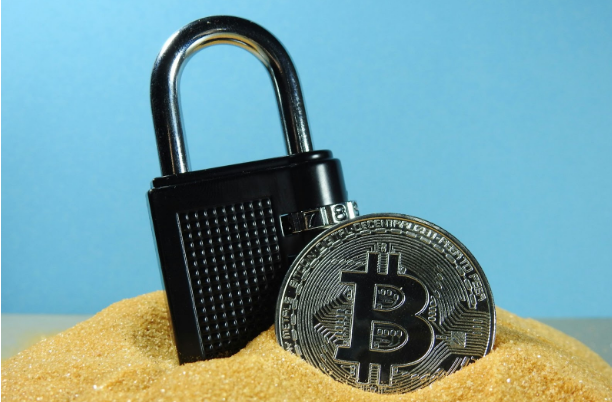Digital scams, such as phishing emails and fake websites, are a constant threat to personal security. Among these, SMS phishing, also known as smishing, is particularly malicious yet less understood by the public. Only about 23% of users are aware of what smishing is about and the potential dangers it presents.
This gap in awareness is worrying, especially with recent news from the FBI about a massive wave of SMS phishing attacks related to toll road fees. To help you understand the risks of smishing for the security of your information and finances, this post will explain what it is and how you can protect yourself from its harm.
Need support after a scam? Join our community today.
What is Smishing (SMS Phishing)?
Smishing, or SMS phishing, is a scam where criminals use text messages to trick people into revealing personal and financial information, clicking on malicious links, or downloading infected software.
Scammers often act as legitimate sources like banks or government agencies, motivating quick action. Unlike email phishing, where many are on guard, the immediate and personal nature of text messages means people are less cautious, making smishing particularly effective.

How Does Smishing Work?
Smishing works through a multistep process designed to confuse and manipulate targets into revealing sensitive information. Here’s how it typically works:
1. Sending Fraudulent Texts
The process begins when cybercriminals send out text messages that appear to be from reputable sources, such as banks, government agencies, or popular retail brands.
2. Pressing for Immediate Action
These messages often create a sense of urgency, warning of an unverified login attempt or a problem with your payment information, pressing you to act immediately.
3. Using Email-to-Text Services
Scammers use email-to-text services to send multiple messages, allowing them to reach many people without needing to obtain their actual phone numbers. These appear on mobile devices like normal SMS text, which makes it more likely that people will interact.
4. Including Malicious Links
These text messages often contain a link that the sender urges the recipient to click. These links lead to fraudulent websites created to look similar to legitimate sites, tricking users into thinking they are updating their details on a secure platform.
5. Capturing Personal Data
Once a victim enters personal information, such as usernames, passwords, or credit card numbers, into the fraudulent website, the attackers capture the data. This information can then be used for illicit purposes, including identity theft, unauthorized transactions, or further phishing attacks.
According to SMS Comparison research, 95% of text messages are read and responded to within five minutes. This shows that people are quick to interact with text messages, often without the usual skepticism they might have towards email messages.
Have questions about dealing with scams? Contact us for support.
What Are the Main Goals of Smishing?
The main goals of SMS phishing scams are to steal sensitive information for malicious purposes. This sensitive information can take many forms, with key targets including:
- Login for Online Accounts: Gaining access to email, social media, or e-commerce accounts allows scammers to act as the victims, access private information, and potentially lock the original user out of their accounts.
- Personal Information: This includes names, addresses, social security numbers, and phone numbers. Data theft allows criminals to commit identity theft, create fake accounts, or commit fraud in the victim’s name.
- Financial Information: Data such as bank account numbers, credit card information, and online banking passwords are highly sought after. These credentials open the door to direct financial theft, unauthorized purchases, or the initiation of fraudulent transactions.
- Corporate Data: In cases targeting employees of organizations, phishers may seek information like trade secrets, internal communications, or login details for corporate networks. The theft of such data can lead to financial and reputational damage to companies.
What Are the Types of Smishing Attacks?
The best way to be protected against smishing fraud is to understand the different methods to trick victims. Here are some of the most common types of SMS phishing scams you need to know:
1. Prize and Packing Delivery Scams
Scammers send messages claiming that the victim has won a contest or prize. The message might appear to come from a reputable company such Amazon, UPS, Costco or FedEx, and usually asks for personal details such as address correction, shipping fee, or payment to claim a supposed prize. For example, you might receive a text saying:
- (Your Name), you have $250 in Amazon Rewards credit: [link] See what you can claim before it expires on 05/24.
2. Transaction Verification Scams
Cybercriminals may pretend to be banks and send fake messages asking people to check a transaction. When users respond to these texts, they confirm their active phone number, which scammers can then use for more targeted attacks or sell to other criminals.
- Security Alert: A transaction of $2,500 at the NewTech2024 Expo has been recorded. Please verify this by clicking here: [link] or contact us directly if this was not authorized.
3. Investment Opportunity Scams
These scams attract victims with the promise of lucrative investment opportunities, particularly in cryptocurrency. After gaining trust and initial small returns, scammers push for larger investments, ultimately gaining control and draining the victim’s accounts.
- Opportunity Alert: Gain exclusive access to invest in the latest eco-friendly technology showcased at the 2024 Global Tech Summit. Start with just $1,000 for potential high returns. More info here: [link].
Learn about how to keep your crypto wallet safe and avoid this kind of scam.
4. Current Events and Charity Scams
These scams exploit current news and charitable causes by soliciting donations or promoting services linked to events like natural disasters, public health crises, or political campaigns. They typically target generous people who are willing to contribute to what they believe is a legitimate cause.
- Urgent: Miami has been hit hard by recent floods. Your donation can help us provide immediate relief to the victims. Act now and make a difference by donating here: [link].
5. Bank Alerts Scams
These messages seem to be notifications from the victim’s bank warning about suspicious transactions, motivating them to click a link or call a number to verify transactions—a tactic designed to capture your financial information. An example message:
- BANK OF AMERICA: We’ve detected unusual activity on your account involving a $3,200 transaction on 06/19. Please confirm this transaction by clicking here: [link] or call us immediately at [phone number].
6. Tax Scams
Particularly around tax season, messages claiming to be from tax agencies offer refunds or threaten penalties for unpaid taxes, seeking personal or financial details. For instance:
- IRS NOTICE: You have a pending refund of $1,200 from overpaid taxes in 2023. To claim your refund now, visit [link] or contact us at [phone number] for further instructions.
7. Service Cancellation
These scams send messages informing recipients that a subscription or service is about to be canceled due to payment issues. The message directs them to a phishing page to “resolve” the issue. A typical message reads:
- Your Netflix subscription will be canceled due to a billing issue. To avoid interruption of service, please update your payment details immediately at [link].
8. Emergency Texts
Preying on concern for loved ones, these messages may claim a family member is in urgent need of help due to an emergency, asking for money transfers or personal information. Variants include fake family member pleas, hospital or police impersonations, or even kidnapper claims, like:
- URGENT Your brother was involved in a car accident and urgently needs money for hospital bills. Please wire $5,000 to this account immediately to assist with medical expenses: [link].
9. Tech Support Scams
Messages alerting to a problem with a device or account, urging the user to contact a provided tech support number. This could lead to unauthorized charges or access to your device. One tactic used is:
- WARNING: Your computer has been detected with a virus and your personal data is at risk. Contact our support team now at [phone number] or visit [link] to prevent data loss and secure your device.
Each type of smishing scam uses specific psychological triggers—fear, urgency, or the lure of a reward—to manipulate people into making hasty decisions that can lead to the loss of money, personal information, or both.

How to Protect Against Smishing Attacks?
Protecting against smishing requires awareness and a safe approach to handling unexpected text messages. Here are practical tips to help you recognize and avoid falling victim to these scams:
- Verify the Sender: If you are uncertain about a message’s authenticity, verify it by contacting the organization directly through an official number or website.
- Identify Warning Signs: Be on the lookout for red flags in text messages. These might include urgent language that asks for immediate action, misspellings, or unusual sender numbers.
- Ignore Suspicious Messages: The simplest and most effective way to avoid falling victim to smishing is to ignore messages from unknown or suspicious sources. If you receive a text that you weren’t expecting or that asks for personal information, the safest approach is to not respond.
- Analyze the Content: Always take a moment to analyze the legitimacy of a message. Ask yourself critical questions: Were you expecting this message? Does the message make sense? Is the sender verifiable? By pausing to think, you can often avoid the dangers set by fraudsters.
- Use Blocking and Reporting Tools: Most mobile devices and messaging apps allow you to block numbers and report spam. Using these features can protect you and also help reduce smishing by reporting the scammers to the authorities.
- Suspicious Links: Be extremely cautious with messages containing links, especially shortened ones like “bit.ly” links. Scammers cover up malicious links to look trustworthy at a glance. Before clicking, hover over the link (if possible) to preview the URL, or simply avoid clicking altogether.
SMS Phishing News: FBI Warns of Rising Toll Fee Scams
The FBI has released a warning about a smishing campaign that’s been targeting Americans with fraudulent messages about unpaid road toll fees. The campaign began last month, and the FBI’s Internet Crime Complaint Center (IC3) has already received over 2,000 complaints.
These smishing texts have targeted residents in at least three states. Here are the key points of the warning that you should be aware of to avoid becoming a victim of this type of scam:
1. Content of Messages
The messages falsely claim that the recipient owes money for unpaid tolls. They use almost identical language, featuring phrases like “outstanding toll amount”, and include hyperlinks meant to look like official toll service links. These links are phishing tools designed to steal personal information.
2. Official Responses and Recommendations
Entities such as the Pennsylvania Turnpike have advised customers not to click on any links in these suspicious texts. The Pennsylvania State Police have also issued warnings about these phishing attempts, emphasizing that the links lead to fake websites designed to obtain personal data.
3. Further Actions
The FBI urges anyone who receives such a message to:
- Report to IC3: Visit www.ic3.gov and report the scam, including the scammer’s phone number and any websites mentioned in the text.
- Verify Your Account: Use the official website of the toll service to check your account for any discrepancies.
- Contact Customer Service: Reach out to the toll service’s customer service phone number for direct inquiries.
- Delete Suspicious Texts: Remove any smishing texts from your device to prevent further risk.
- Secure Your Information: If you’ve clicked on a link or provided personal details, immediately take steps to secure your personal and financial information. Also, complain about any unfamiliar charges immediately.
SMS Phishing Attacks: Stay Updated to Stay Safe
Worldwide, the average financial loss due to smishing is $800 per person. These scams are a serious financial risk and can also lead to identity and privacy theft. Recent news shows that these scams are growing and becoming more sophisticated, making it essential to stay informed.
That’s why everyone should stay up to date with the latest security practices and threats. You can stay informed and up-to-date on all things related to these scams by visiting Crypto Scam Defense Network and joining our community to learn more.
We Want to Hear From You!
Fraud recovery is hard, but you don’t have to do it alone. Our community is here to help you share, learn, and protect yourself from future frauds.
Why Join Us?
- Community support: Share your experiences with people who understand.
- Useful resources: Learn from our tools and guides to prevent fraud.
- Safe space: A welcoming place to share your story and receive support.
Find the help you need. Join our Facebook group or contact us directly.
Be a part of the change. Your story matters.
Frequently Asked Questions (FAQ)
What is smishing?
Smishing, or SMS phishing, is a type of scam where criminals use text messages to deceive people into revealing personal and financial information, clicking on malicious links, or downloading harmful software.
How can I recognize a smishing attempt?
Look for messages that create a sense of urgency, request personal or financial information, come from unknown or unusual numbers, contain spelling or grammar mistakes, or include suspicious links.
What should I do if I receive a suspicious text message?
Do not click on any links or provide personal information. Verify the sender by contacting the organization directly using an official number or website. Report the message as spam and block the sender.
How do scammers get my phone number?
Scammers can obtain phone numbers through data breaches, purchasing lists from shady sources, or using automated systems to generate random numbers.
What are the common types of smishing scams?
Common smishing scams include prize or package delivery scams, transaction verification scams, investment opportunity scams, charity scams, bank alert scams, tax scams, service cancellation scams, emergency texts, and tech support scams.
What steps can I take to protect myself from smishing attacks?
- Verify the sender’s authenticity.
- Be cautious of urgent language in messages.
- Ignore suspicious messages.
- Analyze the content critically.
- Use blocking and reporting tools on your phone.
- Be wary of links, especially shortened URLs.
What should I do if I’ve already responded to a smishing text?
If you’ve clicked on a link or provided personal information, immediately secure your accounts by changing passwords, monitoring for unauthorized transactions, and contacting your bank or relevant institutions to report potential fraud.
Why are smishing attacks effective?
Smishing attacks are effective because text messages feel more immediate and personal than emails, making people less cautious and more likely to respond quickly.
Are there any recent examples of smishing scams?
Yes, the FBI recently warned about a smishing campaign involving fraudulent messages about unpaid road toll fees, which has already generated over 2,000 complaints.
How can I report a smishing attempt?
You can report smishing attempts to the FBI’s Internet Crime Complaint Center (IC3) at www.ic3.gov. Provide details such as the scammer’s phone number and any websites mentioned in the text.
How can I stay updated on the latest smishing threats?
Stay informed by following trusted security websites, joining relevant online communities like the Crypto Scam Defense Network, and subscribing to updates from security organizations.
What are the potential consequences of falling victim to smishing?
Victims of smishing can experience financial loss, identity theft, unauthorized transactions, and compromised personal and financial information.







